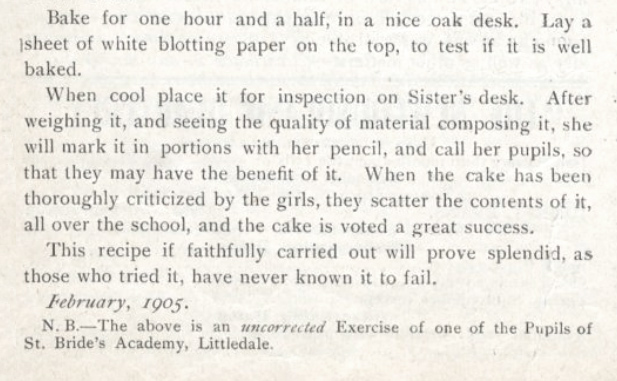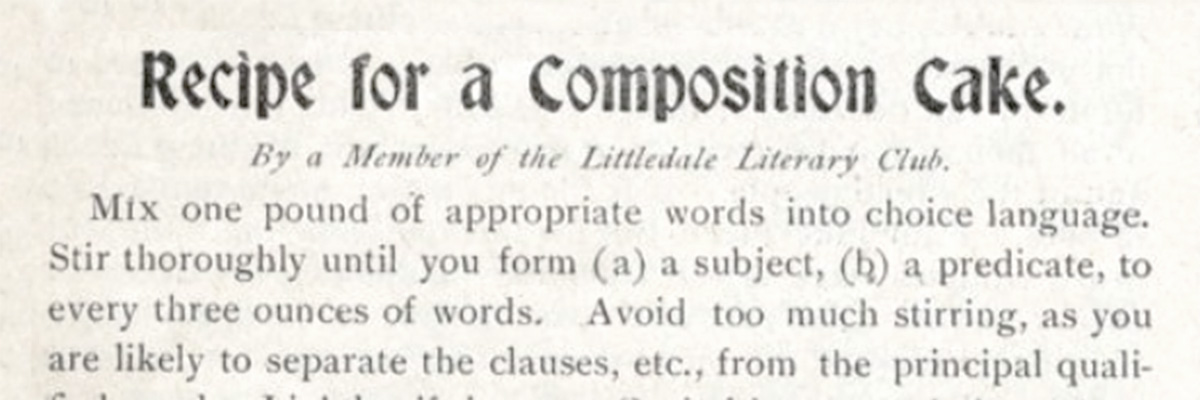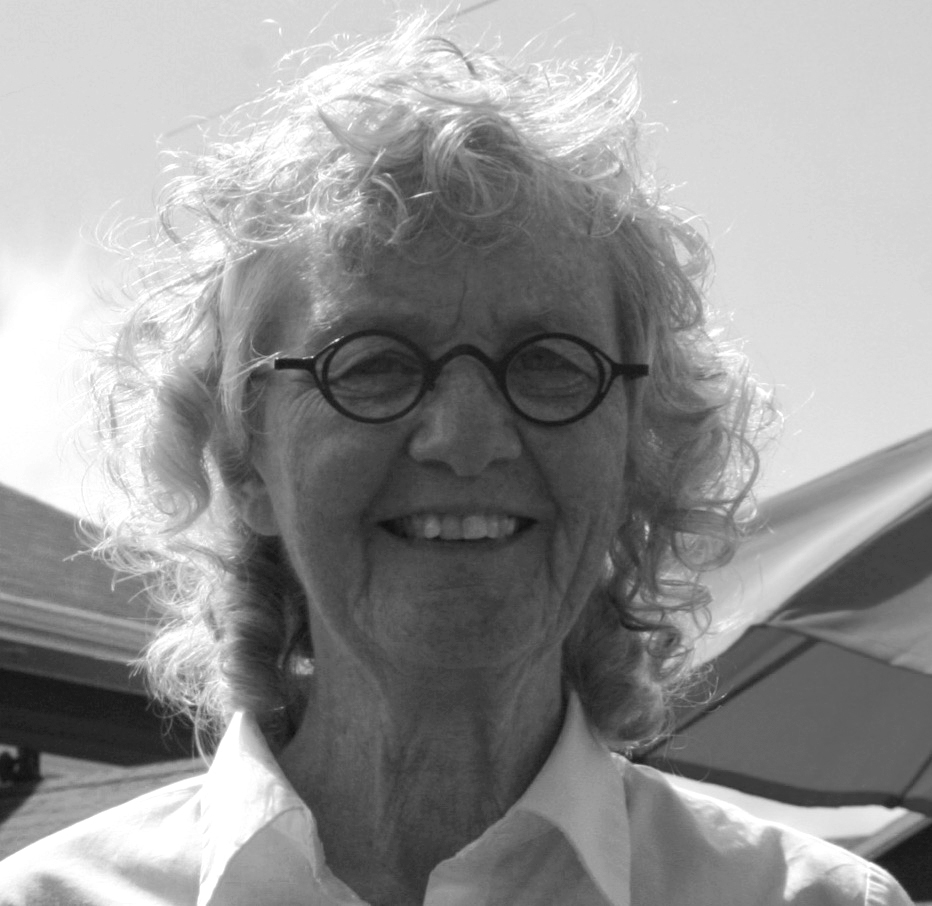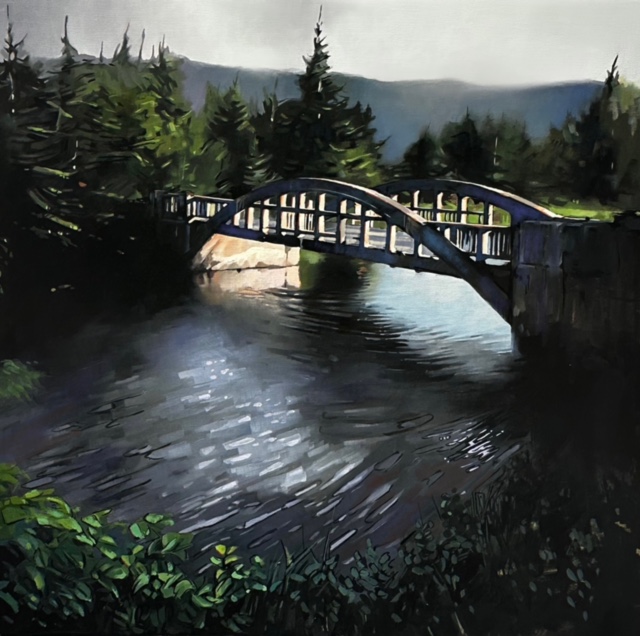Baked in a Nice Oak Desk
May 2017
I WONDER IF a grumbling stomach was the inspiration for this delightful Recipe for a Composition Cake, concocted by a student at St. Bride’s Academy in February 1905:

St. Bride’s Academy was opened in 1884 in Littledale, the St. John’s estate named after Newfoundland’s first Premier, Philip Francis Little. A boarding school run by the Sisters of Mercy, it played an important role in the education of young women in Newfoundland. In the 1960s, a larger campus was constructed on Waterford Bridge Road to the west of the original buildings. A 2006 Building Report from the Heritage Foundation details the long history of this site, which was sold and redeveloped in 2008. It is now The Tower Corporate Campus.
Billing itself from the beginning as “literary magazine,” Newfoundland Quarterly has always baked its language with care (and I’ve been assured they use only the finest punctuation marks). Its early volumes are marked by considerations of language and etymology, especially in Rev. Michael Francis Howley’s long-running series on Newfoundland Name-Lore, which began in the magazine’s second issue, in 1901, and was reprinted in the 1930s.
Similarly, G. Gibb’s regular column Some Well-Known Sayings, Phrases and Words, With Their Meaning and Origin explored the history of sayings such as “in my mind’s eye,” “in the same boat,” and “lick into shape.” In its sixth incarnation, Gibb also tackled the longest words in the English language:
“Llanfairpwllgwyngyllgogerychwyrndrobwllllantysiliogogogoch — the name of a village in Wales. In the postal directory the first twenty letters only, are given as a sufficient address for practical purposes, but the full name contains fifty nine letters. The meaning is “The Church of St. Mary in a hollow of white hazel, near to the rapid whirlpool and to St. Tisilio Church, near to a red cave.”
There’s a wonderful Wikipedia article about the community of Llanfairpwllgwyngyll, as it’s mostly known. Although “the long form of the name was invented for promotional purposes in the 1860s,” it’s still considered the second-longest official one-word place-name in the world. New Zealand is home to the longest one-word place-name: Taumatawhakatangihangakoauauotamateaturipukakapikimaungahoronukupokaiwhenuakitanatahu, which means “The summit where Tamatea, the man with the big knees, the climber of mountains, the land-swallower who travelled about, played his nose flute to his loved one.”
If you’re willing to accept spaces, you can look to Bangkok for the longest place name in the world. And if you’re curious about the longest Wikipedia article title, it’s not a place at all, but a song.
Any one of these long names would probably provide enough language for several Composition Cakes! Here’s the rest of the time-tested recipe, from the March 1905 issue of Newfoundland Quarterly:





